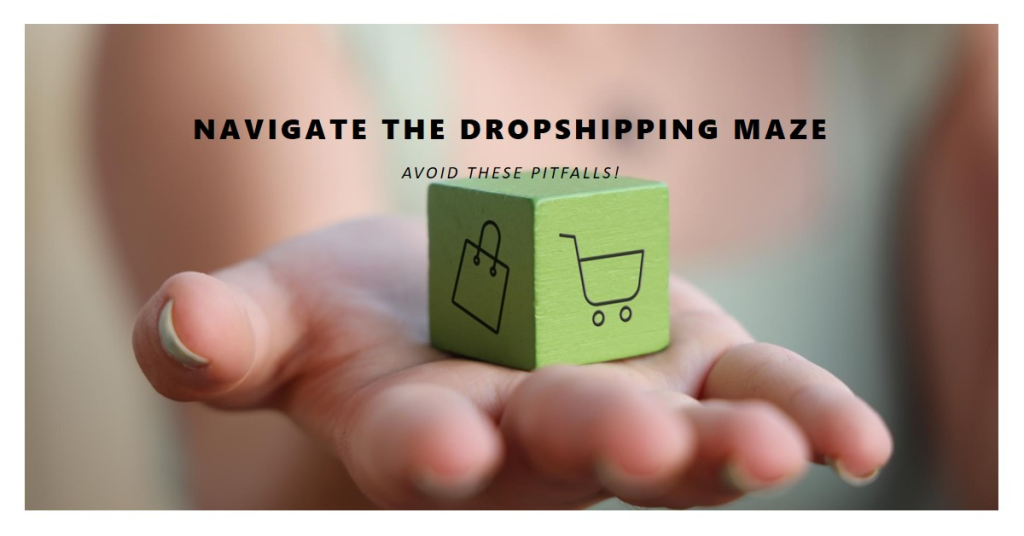7 Crucial Shopify Dropshipping Mistakes Beginners Make (And How to Fix Them)

New to the world of dropshipping? Exciting opportunities await, but tread carefully—there are pitfalls aplenty. In this guide, we’ll walk you through seven common mistakes every beginner dropshipper must sidestep.
By understanding and avoiding these Shopify dropshipping mistakes, you can set your store up for long-term success. So, buckle up and get ready to learn from the experiences of others, so you don’t have to repeat their mistakes.
Shopify Dropshipping Benefits:
- Low startup costs: No need to invest in inventory upfront, making it an attractive option for new entrepreneurs.
- Flexibility: Manage your store from anywhere with an internet connection, offering flexibility in schedule and location.
- Wide product selection: Access various products from various suppliers without holding any stock yourself.
- Scalability: Easily add new products or adjust your offerings as your business grows without worrying about inventory management.
- Lower overhead costs: Eliminate storage, packing, and shipping expenses associated with holding inventory.
- Reduced risk: With traditional retail models, you risk being stuck with unsold inventory. In dropshipping, you only purchase products after you’ve made a sale, reducing the risk of overstocking or obsolete inventory.
7 Common Shopify Dropshipping Mistakes Every Dropshipper Beginner Must Avoid
1. Starting with High Expectations
It’s natural to be excited about your new venture, but setting unrealistic expectations for immediate riches is a recipe for disappointment. Dropshipping, like any business, takes time, effort, and strategic planning to achieve profitability. Focus on building a sustainable business with realistic goals and celebrate each milestone along the way.
Fix: Research, learn, and plan before launching. Set achievable goals based on market data and competitor analysis. Celebrate small wins and track your progress to stay motivated.
2. Not Building Relationships With Your Suppliers
Your suppliers are the backbone of your dropshipping business. Neglecting to build strong relationships with them can lead to unreliable inventory, poor product quality, and communication breakdowns. Treat your suppliers as partners, not just vendors. Communicate openly, be transparent about your expectations, and negotiate mutually beneficial terms.
Fix: Research and choose reliable suppliers with good reputations. Communicate regularly, provide clear instructions, and pay invoices promptly. Consider attending industry events or trade shows to network with potential suppliers.
3. Setting Very Short Delivery Times
Setting unrealistically short delivery times sets you up for failure and disappoints customers. Be honest about expected shipping timelines, factoring in supplier lead times, customs clearance, and potential delays. Remember, transparency is key to building trust and managing customer expectations.
Fix: Calculate accurate shipping times based on supplier information and potential delays. Clearly communicate estimated delivery windows on your product pages and checkout process. Offer multiple shipping options with varied timelines and costs to cater to different customer preferences.
4. Offering Multiple Shipping Fees
While offering various shipping options is important, having too many complicated fee structures can confuse and frustrate customers. Keep your shipping options clear, concise, and competitive. Consider offering free shipping above a certain order threshold or flat-rate shipping for specific regions.
Fix: Analyze your target market and competitors to determine appropriate shipping prices. Offer a limited number of clear and understandable shipping options. Consider free shipping promotions or flat-rate options to incentivize purchases.
5. Not Having an Efficient Returns System
Returns are an inevitable part of the eCommerce landscape. A cumbersome or inflexible returns policy can damage your customer relationships and brand reputation. Make your returns process as smooth and hassle-free as possible, clearly outlining eligibility criteria and return instructions on your website.
Fix: Implement a clear and customer-friendly returns policy. Offer multiple return options (e.g., prepaid labels, and drop-off locations) for convenience. Communicate your return policy effectively on your website and product pages.
6. Relying Too Much on a Single Supplier
Putting all your eggs in one basket is risky. If your sole supplier encounters issues, your entire store could be affected. Diversify your supplier base by working with several reliable vendors offering similar products. This mitigates risk, ensures product availability, and potentially allows you to negotiate better prices.
Fix: Research and identify multiple reputable suppliers for each product category. Gradually diversify your supplier base as your business grows. Negotiate terms with each supplier to ensure product quality, competitive pricing, and reliable fulfillment.
7. Competing on Price
While price is a factor for many customers, solely focusing on being the cheapest option is an unsustainable strategy. It can lead to low-profit margins and limit your ability to offer other value propositions, like excellent customer service or unique product offerings. Instead, focus on providing a differentiated shopping experience that justifies your pricing.
Fix: Highlight your unique selling points (USPs) beyond price, such as product quality, brand story, customer service, or fast shipping. Offer bundles, loyalty programs, or exclusive discounts to incentivize purchases without solely relying on price competition.
Remember, avoiding these Shopify dropshipping mistakes is just the first step. Stay informed about industry trends, adapt your strategies to changing market conditions, and continuously strive to improve your customer experience. With dedication, strategic planning, and a focus on value creation, you can navigate the dropshipping landscape and build a thriving Shopify store.
Boost your dropshipping journey with the right tools! Check out this guide to top Shopify apps for sourcing, managing, and marketing in 2024.



